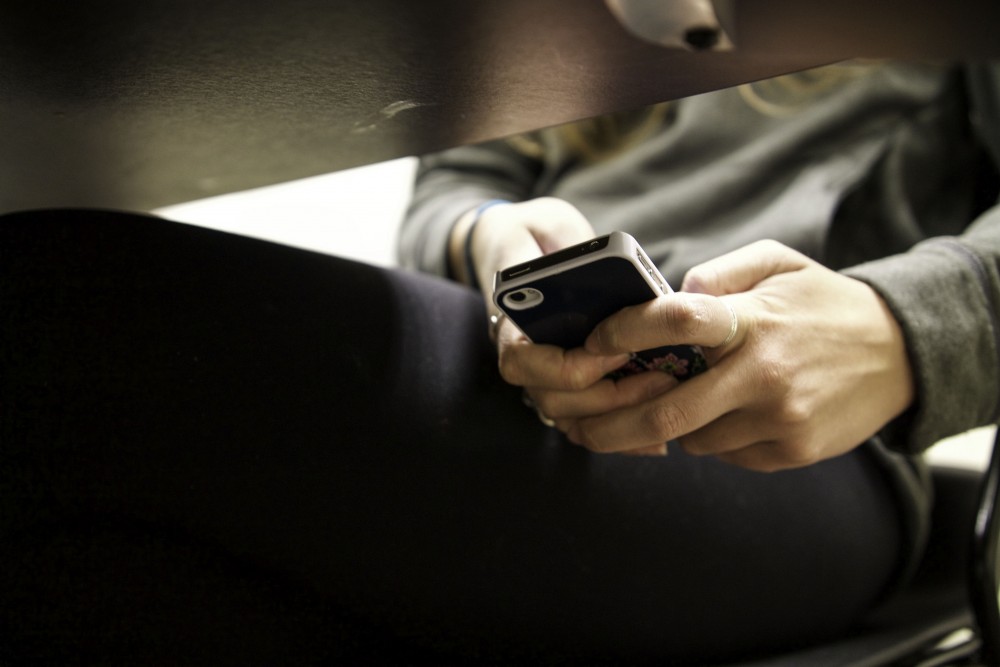New app encourages students to put phones away

GVL / Sara Carte Grand Valley student, Alison Farnsworth, hides her phone while in class at Lake Superior Hall on Oct. 27.
Nov 2, 2015
The mobile application Pocket Points aims to get the word out to the student population to put away their smart phones and start being more engaged in their surroundings.
Pocket Points had its first release in the fall of 2014 at Chico State in California and has since expanded to over 65 cities and over 100 universities.
The concept of the application is to reward students with redeemable points for not using their phones during class. To earn points, the student must open the Pocket Points application, lock their phone and leave it untouched for the duration of the class.
Reportedly, students can earn a point every 20 to 30 minutes, depending on how many people are online.
Once points have been earned, students can use them for discounts at local and online businesses. The businesses featured on the Pocket Points website include IHOP, Dairy Queen, Panda Express and Insomnia Cookies.
“Businesses can utilize pocket points by providing great deals for the students to use their points on,” said Mitch Gardner, co-founder and COO of Pocket Points Inc. “This drives in many new customers (all college students) and if their experience at the business is a good one, they will most likely become loyal customers of that particular business.”
In order for the application to determine if a student is actually using it in a university or college classroom, it uses a Geo-fence technology.
Geo-fence technology, similar to the maps on smart phones, is a virtual perimeter. Therefore, an administrator can set up triggers revealing when a device enters or exits the boundaries, allowing the application to determine if a student is on campus.
“We don’t think technology is a bad thing,” Gardner said. “We just think there is a time and place for it, and when technology starts to become a burden on someone’s quality of life, we want to make sure we capture that moment and make a positive impact.”
GVSU professors also made comments about the potential of Pocket Points.
“Incentivizing students to have one less technology distraction in front of them could be the little push that they need to take a tech break and at the same time fully engage in the learning process in their classrooms,” said Amy Hagerstrom, an assistant professor for advertising and public relations. “I would love that – teaching is so much more rewarding when my students are engaged and participate.”
Valerie Peterson, GVSU communications professor, also talked about the benefits to students.
“The reward, in the form of a discount on products, both recognizes that we are consuming creatures, and also shows that at least some people and businesses in the broader community value the classroom as a sacred space – a place where a ritual of community is being performed and where individual and shared learning is being accomplished,” Peterson said.
GVSU student Madison Adams said the idea sounds interesting.
“I think it’s a pretty cool idea because I would like some free stuff, even if the location part does make me a little uncomfortable,” Adams said.
For more information, visit www.pocketpoints.com.





















